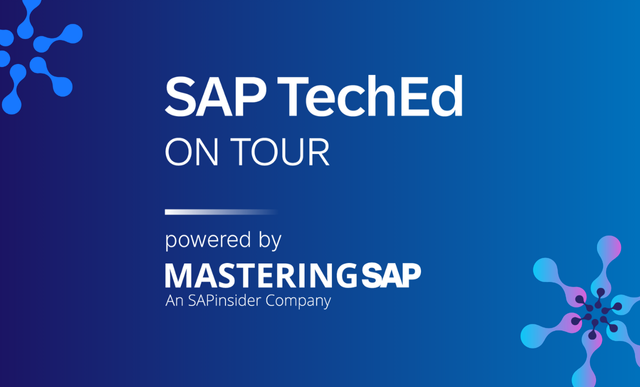SAP Master Data
Filter By
Browse By
- SAP Analytics and AI
- SAP Application Development and Integration
- All SAP Application Development and Integration
- SAP ABAP
- SAP ABAP Development Tools
- SAP ABAP Test Cockpit
- SAP API Management
- SAP BAPI
- SAP Basis
- SAP BRF
- SAP Business Application Studio
- SAP CMS
- SAP Design Studio
- SAP Development Tools
- SAP DevOps
- SAP EAI
- SAP EDI
- SAP Extension Suite
- SAP Fiori
- SAP Fiori Elements
- SAP Integration Suite
- SAP Low Code Application Development
- SAP Low Code Automation
- SAP Netweaver
- SAP Release Management
- SAP UI5
- SAP Web Application Server
- SAP Web IDE
- SAP Business Process Management
- SAP Center of Excellence
- SAP CIO
- SAP Customer Experience
- SAP Data and Data Management
- All SAP Data and Data Management
- SAP BW
- SAP BW/4HANA
- SAP Crystal Reporting
- SAP Data Archiving
- SAP Data Center
- SAP Data Governance
- SAP Data Integration
- SAP Data Migration
- SAP Data Quality
- SAP Data Services
- SAP Data Strategy
- SAP Data Visualization
- SAP Data Warehouse Cloud
- SAP DMS
- SAP Document Control
- SAP EIM
- SAP ETL
- SAP ETL Tools
- SAP HANA
- SAP HANA Administration
- SAP HANA Deployment Infrastructure
- SAP HANA Studio
- SAP Master Data
- SAP Master Data Governance
- SAP MDM
- SAP Enterprise Architect
- SAP Enterprise Asset Management
- SAP ERP
- SAP Finance
- All SAP Finance
- SAP Accounting
- SAP AR AP
- SAP Asset Accounting
- SAP Billing Systems
- SAP BPC
- SAP BRIM
- SAP Cash Management
- SAP Central Finance
- SAP Controlling
- SAP COPA
- SAP Cost Center Accounting
- SAP e-invoicing
- SAP FICO
- SAP Finance Automation
- SAP Financial Closing Cockpit
- SAP Financial Consolidation
- SAP Financial Planning
- SAP FX Risk
- SAP General Ledger
- SAP Global Tax Management
- SAP Hyperion
- SAP Order to Cash
- SAP Payment Processing
- SAP Profitability Analysis
- SAP Rebate Management
- SAP S/4HANA Finance
- SAP Universal Journal
- SAP Governance Risk and Compliance
- SAP Human Capital Management
- SAP Intelligent Technologies
- SAP Platform and Technology
- All SAP Platform and Technology
- SAP Business Technology Platform
- SAP Cloud Connector
- SAP Cloud Integration Platform
- SAP Cloud Migration
- SAP Cloud Platform
- SAP Cloud Providers
- SAP Cloud Strategy
- SAP Container Platform
- SAP Digital Asset Management
- SAP Digital Integration Hub
- SAP Digital Signature
- SAP HANA Enterprise Cloud
- SAP HEC
- SAP Hyperscalers
- SAP Infrastructure
- SAP Messaging
- SAP Smart Forms
- SAP Quality and Testing
- SAP Security
- SAP Spend Management
- SAP Supply Chain Management
- All SAP Supply Chain Management
- SAP APO
- SAP Asset Management
- SAP Business Network
- SAP Digital Manufacturing Cloud
- SAP Digital Twin
- SAP EWM
- SAP IBP
- SAP Inventory Management
- SAP Label Printing
- SAP Logistics
- SAP Manufacturing
- SAP Manufacturing Automation
- SAP MES
- SAP MII
- SAP MM
- SAP MRO
- SAP MRP
- SAP Order Management
- SAP Plant Maintenance
- SAP PLM
- SAP Production Planning
- SAP S&OP
- SAP SD
- SAP SPM
- SAP Supply Chain Planning
- SAP Track and Trace
- SAP Transportation Management
- SAP System Administration
SAP Master Data – Foundation of Data Analytics
Nobody notices a home’s foundation. A good home foundation will not make its presence known, whereas a poor foundation will manifest itself in continued problems – in cracks in walls, uneven floors, doors that won’t shut, gaps in windows, and so on!
Master data is very much like the home foundation. Nobody notices master data when it is good. When it is poor, it shows up in every business process – painfully! Every employee, customer, and vendor feel the pain of not having company-wide, reliable, well-maintained, easily updated, secure and compliant master data.
SAP Master Data – Foundation of Data Analytics
Nobody notices a home’s foundation. A good home foundation will not make its presence known, whereas a poor foundation will manifest itself in continued problems – in cracks in walls, uneven floors, doors that won’t shut, gaps in windows, and so on!
Master data is very much like the home foundation. Nobody notices master data when it is good. When it is poor, it shows up in every business process – painfully! Every employee, customer, and vendor feel the pain of not having company-wide, reliable, well-maintained, easily updated, secure and compliant master data.
In an era where data analytics drives the revenue bus for all companies, a reliable single source of truth of company data is mandatory. Without this foundational truth, all analytics are garbage-in, garbage-out leading to sub-standard decisions and immense amount of frustration.
There are several huge advantages in having reliable and comprehensive master data in all the relevant domains – vendor, customer, materials/products, employee, etc.
- Efficient business processes
- Reduced time to market
- Faster and better data analytics
- Better compliance
- Reduced workload
Yet, SAP master data has become a highly challenging asset to maintain for many reasons – a SAP+third-party applications model, legacy applications, global footprint, compliance constraints, and finally, the increasing multi-cloud, hybrid deployment models.
Once upon a time, SAP was a monolith in many companies, and it was possible to maintain one-source for master data. However, with the proliferation of solutions around SAP, master data is strewn across the company within SAP and non-SAP systems. With complex business processes and supply chains that cut across internal and even vendor, partner or customer systems, master data becomes very difficult to maintain and govern. Vendors such as Laidon solve this with a low-code, prebuilt master data governance solution on the cloud. SimpleMDG’s streamlined user interface retrieves real-time ERP master data and initiates maintenance requests for all CRUD (Create, Read, Update and Delete) processes.
Companies with legacy systems also struggle to migrate their old master data to new systems – the complexity, the costs and the business risks pose difficult hurdles.
Some significant problems in today’s master data involve duplication – lack of proper tools to validate and prevent duplications, lack of well-defined, unique ids and disparate systems make it very easy to generate duplications. Vendors such as Winshuttle enable automation to solve duplication challenges.
Compliance and security are additional complexities today with cloud-based data stores, especially with compliance requirements on who can access personal customer data, where it can be stored and how it should be archived. Governance is the key as this article outlines.
SAP’s own MDM solution with its governance module also continues to provide robust functionality.
1312 results
-

Get Data From Any Table in Another SAP System
Published: 02/July/2015
Reading time: 18 mins
Say you want to get the contents of a table from one of your SAP systems (called the source system) into a current system (called the client system). Most of the time if you want to access the table content of a source system, you need to: Check to see if the content is in…
-

Get Data From Any Table in Another SAP System: A Generic Way in ABAP
Published: 02/July/2015
Reading time: 29 mins
Learn a new way to load data from any table in any SAP system to any other SAP system. See how to use a Remote Function Call (RFC) function module call, Runtime Type Service (RTTS), and JavaScript Object Notation (JSON) serialization/deserialization. Key Concept A Remote Function Call (RFC)-enabled function module is a function module that...…
-

Secrets to Successful Data Conversions
Published: 16/July/2010
Reading time: 23 mins
Converting data from a legacy system to an SAP system can be a daunting task. Follow experienced advice for planning and executing your data conversion strategy, from developing project scope to testing and monitoring the data conversion. Included with these tips are two downloads: a sample Microsoft Visio data dependency planning chart and a conversion...…
-
-

Select and Transfer a Time Slice of Data for Testing with SAP Test Data Migration Server 3.0
Published: 15/January/2009
Reading time: 35 mins
The new SAP Test Data Migration Server (TDMS) is an automated solution for creating test systems that can be a real alternative to full-system copies. It can pare down the size of your test system in a variety of ways, the most popular of which is to copy only a time slice of your production...…
-

Selective Data Transition vs. Full Migration: Choosing the Right Approach for SAP S/4HANA
Reading time: 17 mins
Migrating from SAP ECC to SAP S/4HANA involves choosing between Selective Data Transition, which allows for flexible and tailored data migration, and Full Migration, which fully integrates existing systems but requires significant reconfiguration, with specific strategies and thorough preparations critical for successful execution.
-

Growing Need for Financial Master Data Management Automation
Published: 31/May/2022
Reading time: 4 mins
Finance and accounting (F&A) teams must efficiently access accurate and reliable information in today’s fast-paced environment. This way, F&A teams can generate the organizational visibility to make timely decisions on various fronts, from revenue growth or cost-cutting initiatives to strategic planning for new business models or corporate transactions. Finance master data is the foundation for…
-

Customize Your Logistics and Finance Processes by Changing Production Master Data with ECM
Published: 11/August/2009
Reading time: 14 mins
Engineering Change Management (ECM) is a central function in logistics that you can use to change various aspects of production master data (e.g., bills of material, routings, and materials) with history (using effectivity dates) or depending on specific conditions. Understand the purpose of ECM using SAP ERP Central Component 6.0 and how you can use...…
-
-

Smart Data Access Prevents Data Duplication in SAP BPC
Published: 28/July/2015
Reading time: 12 mins
Learn how to configure SAP Business Planning and Consolidation (BPC) 10.1, version for NetWeaver with SAP HANA for planning using any SAP or non-SAP master data. You can use the data in SAP BPC 10.1, version for NetWeaver in real time without any data duplication or replication. Key Concept The SAP HANA system handles data...…
-

How to Change Infotype Data Using Standard Classes and Methods
Published: 11/March/2016
Reading time: 18 mins
SAP provides a number of standard classes (and methods) for updating records in infotypes. Learn the detailed steps required to create new records in an infotype, delete a record, and change fields of an already-existing infotype record. Key Concept Casting allows you to carry out assignments between two reference variables. Once the assignment is successful,...…
-

An Introduction to SAP Predictive Analytics 2.0 and SAP HANA Predictive Tools
Published: 01/May/2015
Reading time: 64 mins
In this exclusive report by Hillary Bliss, take a walk into the world of the SAP suite of predictive tools with an in-depth tour of the new SAP Predictive Analytics 2.0 and how it ties into SAP HANA and SAP Lumira. Learn the importance of general predictive modeling concepts, and then apply those concepts as...…
Featured Experts
-

Clifford Seckman
President, Virginia Software Group, Inc.
-

Akash Kumar
Associate General Manager, HCL
-

Sparsh J Varsani
SAP Consultant
Become a Member
Unlimited access to thousands of resources for SAP-specific expertise that can only be found here.
Upcoming Events
-

SAP TechEd on Tour, powered by Mastering SAP
November 12 - 14, 2025
Sydney, New South Wales
Australia
View Event
Related Vendors
Your request has been successfully sent
